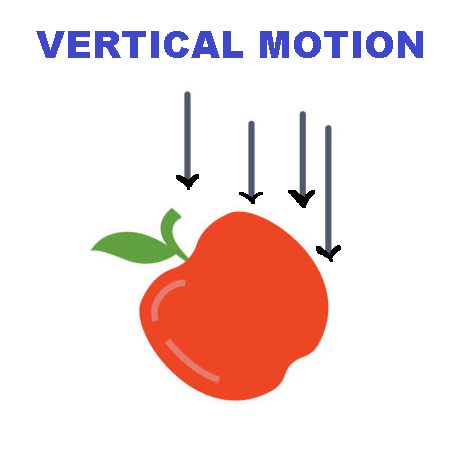Vertical motion:
1. When a body is dropped from a height under gravity and neglecting the resistive forces, then, initial velocity of the body (u) is zero. The acceleration of the body is a = g.
The velocity of the body at time t is v = gt [using v = u + at].
The distance travelled by the body for time t is h = ![]() [using
[using ![]() ].
].
The velocity of the body when h height is travelled v = ![]() [using v2 = u2 + 2as].
[using v2 = u2 + 2as].
2. When a body is thrown vertical upward with initial velocity u under gravitational acceleration g, then its final velocity is zero and it travels a maximum height H.
The velocity of the body at time t is v = u – gt [using v = u + at and a = – g].
The distance travelled by the body for time t is h = ut – ![]() [using
[using ![]() and a = – g].
and a = – g].
The velocity of the body when h height is travelled ![]() [using v2 = u2 + 2as and a = – g].
[using v2 = u2 + 2as and a = – g].
The maximum height travelled by the body is H = ![]() [using v2 = u2 + 2as where v = 0 and a = – g].
[using v2 = u2 + 2as where v = 0 and a = – g].
Time of ascent and time of descent are same: A body is projected vertically upwards with velocity u and after time t it reaches the maximum height H before stop. Then using the equation v = u – gt we get, 0 = u – gt or, t = ![]() .
.
When the body is at height H then using the equation v2 = u2 – 2gH
We get, 0 = u2 – 2gH or, H = ![]() .
.
If the body takes time T to reach the ground from maximum height, then using the equation ![]()
Or, H = 0.T + ![]()
Or, ![]() =
= ![]()
Or, T = ![]() .
.
So, Time of ascent = time of descent.
